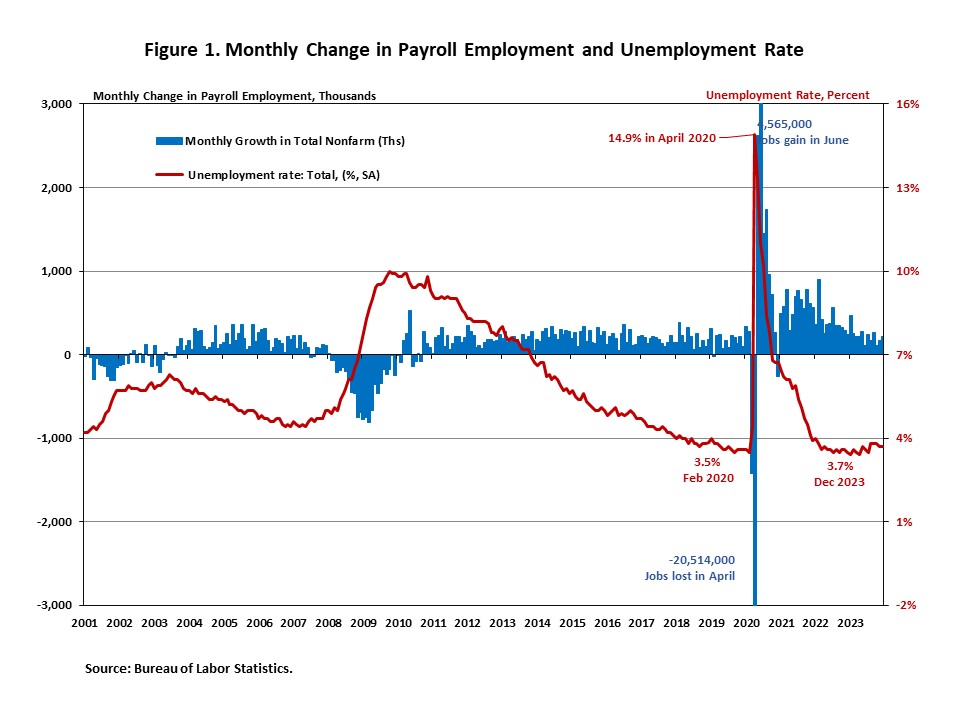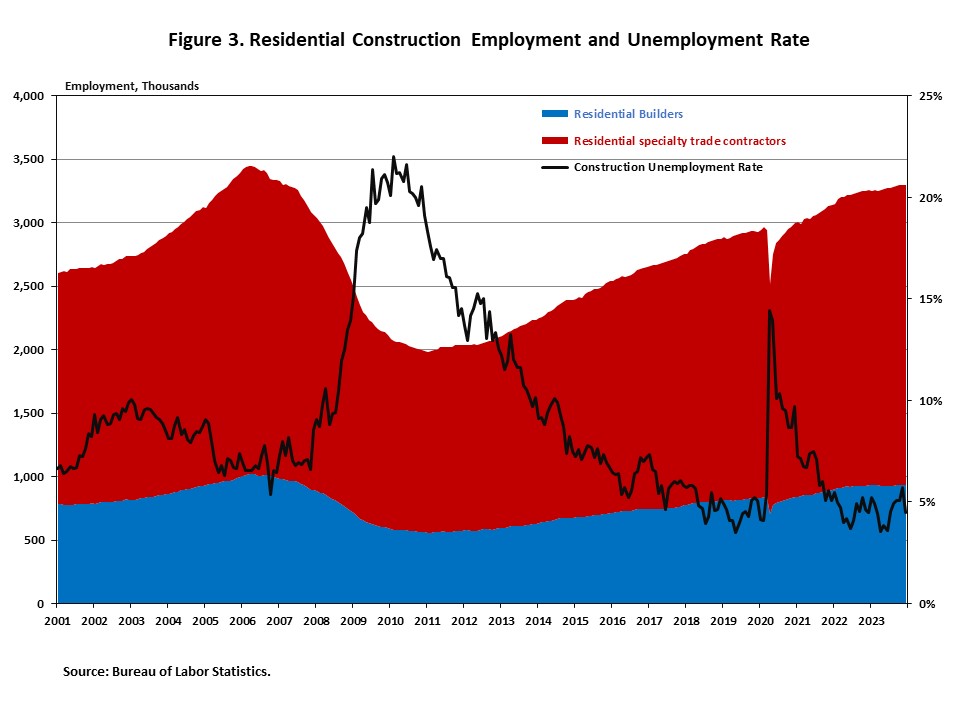December’s jobs report concludes another solid year of job hiring in 2023. In December, total nonfarm payroll employment increased by 216,000, and the unemployment rate held steady at 3.7% for the second month. Job gains moderated in 2023 with an average 225,000 monthly employment growth but remained strong.
In December, wage growth accelerated to a 4.1% year-over-year (YOY) growth rate, up from 4.0% in November and down 0.7 percentage points from a year ago.

The total nonfarm payroll employment increase of 216,000 in December was followed by two previous months of revisions, as reported in the Employment Situation Summary. The monthly change in total nonfarm payroll employment for November was revised down by 26,000, from +199,000 to +173,000, while October was revised down by 45,000 from +150,000 to +105,000. Combined, the revisions took the original estimates down by 71,000.
Despite restrictive monetary policy, more than 6 million jobs have been created since March 2022, when the Fed enacted the first interest rate hike of this cycle. In 2023, 2.7 million jobs were created, and monthly employment growth averaged 225,000 per month, less than the average monthly growth of 399,000 in 2022 and 606,000 in 2021.
The unemployment rate was unchanged at 3.7% in December as the labor force participation rate edged down. The number of unemployed persons was essentially unchanged, while the number of employed persons decreased by 683,000.
The labor force participation rate, the proportion of the population either looking for a job or already holding a job, decreased by 0.3 percentage points to 62.5%, marking its lowest rate since February 2023. December’s decrease in the labor force participation rate reflects the decrease in the number of persons in the labor force (-676,000) and the increase in the number of persons not in the labor force (+845,000). Moreover, the labor force participation rate for people aged between 25 and 54 edged down to 83.2%. While the overall labor force participation rate is still below its pre-pandemic levels at the beginning of 2020, the rate for people aged between 25 and 54 exceeds the pre-pandemic level of 83.1%.

The government (+52,000), health care (+38,000), social assistance (+21,000), and construction (+17,000) sectors led December’s job gains, while transportation and warehousing shed 23,000 jobs in December.
Employment in the overall construction sector increased by 17,000 in December, following a 6,000 gain in November. While residential construction added 5,500 jobs, non-residential construction employment added 11,900 jobs for the month.
Residential construction employment now stands at 3.3 million in December, broken down into 936,000 builders and 2.4 million residential specialty trade contractors. The 6-month moving average of job gains for residential construction was 4,000 a month. Over the last 12 months, home builders and remodelers added 40,100 jobs on a net basis. Since the low point following the Great Recession, residential construction has gained 1,316,800 positions.
In December, the unemployment rate for construction workers dropped by 1.2 percentage points to 4.5% on a seasonally adjusted basis. The unemployment rate for construction workers remained at a relatively lower level, after reaching 14.2% in April 2020, due to the housing demand impact of the COVID-19 pandemic.


